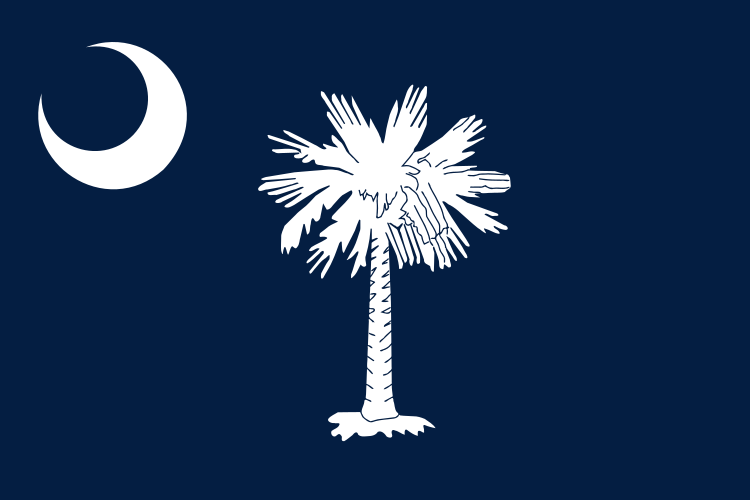Este artículo explica que el símbolo que aparece en el ángulo superior izquierdo de la bandera de Carolina del Sur, y que generalmente se identifica como una media luna, es en realidad una gola o gorguera, una pieza de armadura que protegía el cuello. En próximos artículos se explicará la relación de este objeto con la bandera.
That’s no crescent moon on the S.C. flag
In the first of a fourpart series, we’ll be examining the crescent-shaped object that appears in the upper left corner of the state flag. Most South Carolinians know the story of the Sabal Palmetto Tree and its special relationship with the state and in particular, her martial history.
But what about the other emblem?
For generations, many of us have been told it’s a crescent moon; in fact, an entire commercial industry has even evolved around this belief. Is this, however, correct?
Nope, not even close. Said emblem is actually a gorget, and this was never really in dispute until one man’s artistic sensibilities— as will be discussed in a later article —unwittingly changed an entire state’s perception.
While we are known today as the “Palmetto State,” the Sabal Palmetto was not officially adopted by South Carolina until 1861. Prior to that, our state flag consisted only of a “U” shaped emblem in the upper left corner with the tips noticeably blunted. This is the classic and unmistakable shape of a gorget.
In this article and the ones that follow, the gorget’s unique relationship with the State of South Carolina and especially her military tradi- tion will be explored from its early origins to its continued relevance today. In the end, one will easily see how the gorget supersedes even the Sabal Palmetto as the first true symbol of South Carolina.
First, what exactly is a gorget? The gorget made its debut on medieval battlefields as a crescent or U-shaped steel or sometimes leather device designed to protect the wearer’s throat (gorge in French). As gunpowder, however, revolutionized warfare and rendered heavy armor pointless, the gorget lost its original purpose and was instead transformed into an ornamental and ceremonial uniform accessory.
Often highly stylized with intricate engravings, the gorget was worn primarily— especially in 18th century European armies —as a symbol of rank and/or authority. This influence naturally migrated to the “new world” where colonial militias, including South Carolina’s, adopted the gorget in an almost identical manner. Specifically, officers wore a smaller version of the medieval gorget suspended from their necks by colorful ribbons. Sometimes these ribbons designated their individual units while the gorgets themselves, depending on the color, signified their rank. Other times and especially in South Carolina, the gorget’s color represented a specialty such as artillery or infantry.
The gorget ultimately fell from favor by the mid- 19th century but then experienced a renaissance when none other than Nazi Germany incorporated it as a symbol of authority for its military police.
Today, other countries ranging from Mexico to Finland use the gorget in a similar manner. Some have retained the classic version while others have incorporated the symbol into uniform patches.
Most interesting, however, is the gorget has actually come full circle in the United States military. Originally designed and used as a practical protective device, it’s being employed once more in the latest combat vests of both the Army and Marine Corps. Although now made of kevlar rather than steel or leather, the purpose is still the same: protect the soldier’s neck and throat. Medieval engineering for the modern battlefield!
Next: How the gorget became a symbol of and uniquely tied to the early South Carolina soldier.
The South Carolina Military Museum • 1225 Bluff Road, Columbia, S.C. 29201www.scmilitarymuseum.com • 803-806-4440
Columbia Star (imagen: Wikipedia)


No hay comentarios:
Publicar un comentario